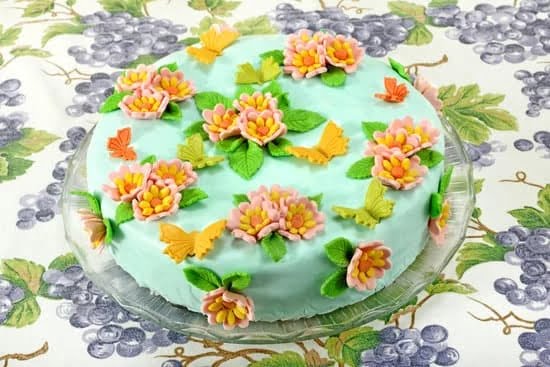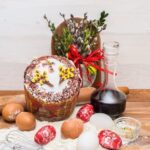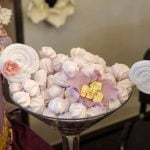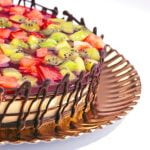Decorating a wedding cake with royal icing is a true art form that adds elegance and beauty to any celebration. In this article, we will explore the techniques and steps involved in creating stunning designs using royal icing. Whether you are a professional baker or an aspiring home decorator, this guide will provide all the necessary information to master the art of royal icing decoration for wedding cakes.
When it comes to wedding cake designs, few techniques compare to the sophistication and timeless beauty of royal icing. This versatile medium allows for intricate detailing and delicate decorations that can transform a simple cake into a work of edible art. From filigree lace patterns to elegant monograms, there are endless possibilities when it comes to designing with royal icing.
Before diving into the decorating process, it is important to gather all the essential tools and ingredients needed for success. Quality tools such as piping bags, tips, spatulas, and stencils are crucial for achieving precise designs. Additionally, using fresh eggs, high-quality icing sugar, and flavorful extracts will ensure that your royal icing not only looks beautiful but tastes delicious too.
Now that we have introduced the concept of decorating a wedding cake with royal icing and discussed its popularity in wedding cake designs today, let’s move on to the next section: Gathering the Essentials: Tools and Ingredients.
Gathering the Essentials
When it comes to decorating a wedding cake with royal icing, having the right tools and ingredients is crucial for achieving a beautiful and professional-looking design. Here, we will discuss the essential tools needed for this technique as well as the importance of using quality ingredients to ensure the best results.
Tools:
- Piping Bags: Piping bags are a must-have when working with royal icing. It is recommended to have multiple sizes available for different decorating techniques.
- Piping Tips: A variety of piping tips in different shapes and sizes will allow you to create intricate designs and textures on your wedding cake. Some commonly used tips include round, star, leaf, and petal tips.
- Offset Spatula: An offset spatula will help you spread the royal icing smoothly onto the cake surface and achieve an even layer.
- Turntable: Working on a turntable makes it easier to apply royal icing evenly and rotate the cake while decorating, ensuring consistent results.
- Palette Knife or Bench Scraper: These tools are useful for smoothing out the royal icing once it has been applied to the cake.
Ingredients:
- Fresh Eggs: Using fresh eggs is important when making royal icing as they provide stability and make for better texture and consistency.
- Icing Sugar (Powdered Sugar): This is the main ingredient in royal icing. Make sure to sift it before using to avoid lumps in your icing.
- Flavor Extracts: Adding flavor extracts such as vanilla, almond, or lemon can enhance the taste of your royal icing. Choose high-quality extracts for the best flavor.
- Water or Liquid Food Coloring: Water or liquid food coloring can be used to tint your royal icing if desired. Gel coloring may alter the consistency of the icing, so it is not recommended for this technique.
By gathering these essentials before you start decorating your wedding cake with royal icing, you will be well-equipped to create a stunning and professional-looking design. Quality tools and ingredients will ensure that your royal icing is easy to work with and produces beautiful results.
Preparing the Royal Icing
Royal icing is a versatile and widely used icing for decorating wedding cakes. It has a smooth, glossy finish that creates an elegant and professional look.
Making royal icing from scratch is surprisingly simple, and with the right consistency, you can achieve intricate designs and decorations on your cake. In this section, we will provide you with detailed step-by-step instructions on how to make royal icing from scratch along with information about the different consistencies required for various decorating techniques.
To make royal icing, you will need the following ingredients:
- 2 large egg whites.
- 4 cups of sifted icing sugar.
- 1 teaspoon of lemon juice or cream of tartar (optional).
- Food coloring or flavor extracts (optional).
Here’s a step-by-step guide on how to prepare royal icing:
- Start by separating the egg whites from the yolks. It’s important to use fresh eggs for both taste and food safety reasons.
- In a clean mixing bowl, whisk the egg whites until they become frothy. If desired, you can add a teaspoon of lemon juice or cream of tartar at this stage to improve stability.
- Gradually add in the sifted icing sugar, about one cup at a time, while continuously beating the mixture on low speed. The lemon juice or cream of tartar helps prevent crystallization in the final product.
- Once all the sugar has been incorporated, increase the speed of your mixer to medium-high and continue beating until stiff peaks form. This may take around 5 minutes.
- At this point, your royal icing is ready to be used as is for creating designs with a firm consistency. If you prefer a different consistency for specific decorating techniques such as flooding or piping fine details, adjustments can be made by adding small amounts of water or sugar respectively.
Royal icing has three main consistencies: stiff consistency (outline/piping), medium consistency (flowers, borders), and flood consistency (filling large areas). Achieving the perfect consistency is crucial for successful royal icing decoration. To adjust the consistency, you can add small amounts of water or sifted icing sugar until you reach your desired thickness.
Once your royal icing is prepared and in the desired consistencies, it’s important to cover it with a damp cloth or plastic wrap to prevent it from drying out while you work on other stages of decorating your wedding cake. By following these step-by-step instructions, you will be well-equipped to create beautifully decorated wedding cakes using royal icing.
| Ingredients |
|---|
| 2 large egg whites |
| 4 cups of sifted icing sugar |
| 1 teaspoon of lemon juice or cream of tartar (optional) |
| Food coloring or flavor extracts (optional) |
Crumb Coating the Wedding Cake
When it comes to creating a perfectly smooth and flawless surface for your wedding cake, crumb coating is an essential step in the decorating process. Not only does it help to seal in any loose crumbs, but it also provides a solid base for the final layer of royal icing. Here’s a step-by-step guide on how to properly crumb coat your wedding cake with royal icing:
- Level and stack your cake layers: Before applying any icing, ensure that your cake layers are level and evenly stacked. Use a serrated knife or cake leveler to trim off any domed tops and make sure all the layers are of equal height.
- Prepare the royal icing: Before starting the crumb coating process, make sure you have prepared a batch of royal icing with a medium consistency. This means that when you lift your spoon out of the icing, it should hold its shape briefly before gradually sinking back into itself.
- Apply a thin layer of royal icing: Using an offset spatula or palette knife, spread a thin layer of royal icing onto the entire surface of each cake layer. Start with the top layer and then move on to the sides, making sure to cover all exposed areas.
- Smooth out the icing: Once you have applied the icing, use a bench scraper or straight-edge spatula to gently smooth out the surface of each cake layer. Hold the scraper at a slight angle against the side of the cake and rotate it around until you achieve a smooth finish.
- Chill before applying final layer: After crumb coating each cake layer, place them in either refrigerator or freezer for about 10-15 minutes to allow the royal icing to set and firm up. This will create a stable base for adding your final layer of decoration.
Remember, crumb coating is meant to be a thin layer just thick enough to seal in any crumbs and create an even surface. It’s important not to apply too much pressure while spreading and smoothing the icing to avoid lifting up crumbs or damaging the cake layers. With a perfectly crumb-coated cake, you’re now ready to move on to the next steps of decorating with royal icing.
- Apply a thin layer of royal icing onto each cake layer, covering all exposed areas.
- Use a bench scraper or straight-edge spatula to smooth out the surface of each cake layer.
- Chill the crumb coated cakes in the refrigerator for 10-15 minutes before adding a final layer of decoration.
By following these steps, you’ll be able to achieve a smooth and professional-looking base for your wedding cake design. Now that you’ve successfully crumb coated your cake, it’s time to move on to the exciting part – piping intricate designs with royal icing.
Piping Techniques
Decorating a wedding cake with royal icing offers endless possibilities for creating intricate designs that will truly impress your guests. Piping techniques are an essential skill to master in order to achieve these stunning designs. Whether you want to create delicate filigree, elegant lace patterns, charming dot accents, or intricate floral arrangements, piping techniques will be your go-to method.
To start, it is important to have the right tools on hand. Here are some essential tools for piping with royal icing:
- Piping bags: These can be disposable or reusable and come in various sizes depending on the design you want to achieve.
- Piping tips: Choose a variety of tips such as round tips for dots and outlines, star tips for borders and fillings, and petal tips for creating flowers.
- Couplers: These allow you to easily change the piping tip without changing the bag of royal icing.
- Toothpicks or scribes: These are helpful for popping any air bubbles that may form while piping.
- Practice board or parchment paper: Use this surface to practice your piping techniques before applying them to the actual cake.
Once you have gathered your tools, it’s time to make your royal icing and achieve the right consistency for piping. The consistency of royal icing varies depending on the desired technique – thin consistency is used for writing and outlining, medium consistency is ideal for filling in larger areas or creating dimensional effects, and thick consistency is perfect for making flowers with petal tips.
To achieve these different consistencies, follow these steps:
- Begin with fresh egg whites or pasteurized liquid egg whites.
- Gradually add sifted icing sugar into the egg whites while whisking until all of the sugar has been incorporated.
- For thin consistency, add water or lemon juice one teaspoon at a time until desired thinness is reached.
- For medium and thick consistencies, gradually add more icing sugar until the desired consistency is achieved.
Now that you have your royal icing ready, it’s time to start piping. Begin by practicing basic techniques such as dots, lines, and outlines on a practice board or parchment paper. Once you feel comfortable, move on to more intricate designs like filigree and lace patterns.
For filigree designs, use a round tip with thin or medium consistency icing and pipe delicate swirls or loops onto the cake. Lace patterns can be achieved by using a small round tip or a fine writing tip to create intricate lace-like details.
Dots can be made using a small round tip with medium consistency icing to add texture and interest to your design. Lastly, for flowers, use petal tips of various sizes with thick consistency icing in different colors to create stunning floral arrangements.
Remember, practice makes perfect when it comes to piping techniques. Don’t be afraid to experiment and try new designs. With time and patience, you will master the art of creating intricate designs with royal icing on your wedding cakes.
Pressed Icing Patterns and Molds
Pressed icing patterns and molds are a great way to add intricate and stunning designs to a wedding cake decorated with royal icing. These tools allow decorators to create beautiful patterns, textures, and shapes that can elevate the overall design of the cake.
When using pressed icing patterns, it is important to roll out the royal icing into a thin sheet before pressing the pattern onto it. This ensures that the pattern is clear and defined once it is transferred onto the cake. It is also important to work quickly when transferring the pattern from the icing sheet to the cake, as royal icing dries fairly quickly.
Molds, on the other hand, are three-dimensional tools that can be filled with royal icing and then applied directly onto the cake for a raised design. There is a wide range of molds available in various shapes and sizes, allowing decorators to create unique designs such as flowers, leaves, or intricate lace patterns.
To use a mold effectively, it is recommended to lightly dust it with cornstarch or powdered sugar before filling it with royal icing. This prevents sticking and makes it easier to remove the molded design from the mold without damaging it.
Using pressed icing patterns and molds requires practice and precision to achieve desired results. It may be helpful for beginners to start with simpler designs before moving on to more complex ones. Additionally, experimenting with color variations or adding details like edible glitter or luster dust can enhance the final effect of pressed icing patterns and molds.
In summary, pressed icing patterns and molds provide an opportunity for decorators to showcase their creativity by adding intricate designs and textures to wedding cakes decorated with royal icing. These tools offer endless possibilities for creating visually stunning cakes that are sure to impress wedding guests.
| Tool | Description |
|---|---|
| Pressed Icing Patterns | Flat patterns that can be pressed onto rolled-out royal icing to create intricate designs |
| Molds | Three-dimensional tools that can be filled with royal icing and applied directly onto the cake to create raised designs |
| Cornstarch/ Powdered Sugar | Used to lightly dust molds to prevent sticking and aid in the removal of molded designs |
Adding Dimension
When it comes to decorating a wedding cake with royal icing, adding dimension is essential for creating an eye-catching and visually appealing design. One way to achieve this is by using stencils and stamps. These tools allow you to add depth and texture to your royal icing decoration, taking it from flat to fabulous. In this section, we will explore how to use stencils and stamps effectively for stunning results.
Using Stencils
Stencils are a fantastic tool to add intricate patterns or elegant motifs on the surface of your wedding cake. They come in various designs, ranging from delicate lace patterns to bold geometric shapes. To use a stencil, follow these steps:
- Prepare your royal icing: Before applying the stencil, make sure your royal icing is of the right consistency. It should be firm enough to hold its shape but still flexible for easy spreading.
- Secure the stencil: Place the stencil gently on the desired area of your cake, ensuring it lies flat against the surface. You can use small dabs of royal icing or tape to secure it in place.
- Apply the royal icing: With an offset spatula or palette knife, spread a thin layer of colored royal icing over the stencil openings. Take care not to press too hard or apply too much pressure, as this may cause the icing to bleed under the stencil.
- Remove the stencil: Slowly lift off the stencil from one end to avoid smudging or smearing the design. If you’re not satisfied with how it turned out, you can scrape off the design and try again.
Using Stamps
Stamps are another fantastic tool for adding dimension and detail to your wedding cake decoration with royal icing. They allow you to create intricate patterns, textured backgrounds, or even personalized messages easily. Here’s how you can use stamps effectively:
- Prepare your royal icing: Just like when using stencils, make sure your royal icing is of the right consistency before applying stamps.
- Ink the stamp: Use a food-safe ink pad or food coloring gel to coat the surface of your stamp with color. It’s important to avoid excessive ink, as it can result in blotchy impressions.
- Press the stamp: Gently press the inked stamp onto the desired area of your cake where you want to add dimension. Hold it in place for a few seconds to allow the design to transfer to the royal icing.
- Lift and repeat: Lift the stamp slowly and carefully, ensuring not to smudge or distort the design. If needed, wipe off any excess ink on a paper towel before re-inking and repeating the process.
By utilizing stencils and stamps, you can effortlessly enhance your wedding cake’s design with stunning dimension and texture. These techniques provide endless possibilities for creativity and personalization, allowing you to create unique and memorable cakes that will leave a lasting impression on your guests.
Personalizing the Wedding Cake With Monograms and Initials
Personalizing a wedding cake with monograms and initials is a beautiful way to add a unique touch to the royal icing design. It allows couples to showcase their love and personal style on their special day. Whether you prefer classic elegance or modern simplicity, incorporating monograms and initials into the cake design can create a truly personalized masterpiece.
When it comes to choosing font styles for monograms and initials, the options are endless. Traditional script fonts are popular choices for a romantic and timeless look, while modern sans-serif fonts offer a contemporary feel. It’s essential to choose a font that complements the overall theme and aesthetic of the wedding.
Placement of the monogram or initials is another important consideration. Some couples prefer to place it at the center of the cake, while others may opt for more subtle placement on the sides or corners. You can also consider integrating them into other decorative elements such as flowers or lace patterns for a cohesive design.
To incorporate monograms and initials into the royal icing decoration, there are different techniques you can utilize. One method is using piping bags with small round tips to pipe out the letters directly onto the cake. Alternatively, if precision is more important, you can use letter stencils or molds specifically designed for cake decorating.
No matter which technique you choose, practice is key to achieving flawless results. Experiment with different piping pressures and practice on parchment paper before attempting it on the cake itself. Remember to let each letter dry before adding additional layers or decorations around them.
Adding monograms and initials to your wedding cake with royal icing not only creates a personalized touch but also showcases your attention to detail and commitment to creating a memorable experience for your guests. With these tips in mind, you will be able to design a stunning wedding cake that truly represents your unique love story.
Finishing Touches and Pro Tips
Finishing touches and pro tips are essential in achieving a flawless and stunning wedding cake when decorating with royal icing. These extra details can take your cake design to the next level and make it truly memorable. Here are some expert tips and techniques to consider when adding those final touches to your royal icing wedding cake.
One pro tip is to use edible pearls to enhance the elegance and sophistication of your cake. Edible pearls can be placed strategically throughout the design, adding a touch of glamour and luxury. They come in various sizes and colors, allowing you to customize the look of your cake based on the theme or color scheme of the wedding.
Another way to elevate your design is by incorporating sugar flowers into the royal icing decoration. Sugar flowers provide a delicate and realistic touch to any cake design, creating a visually stunning centerpiece. Whether you opt for classic blooms like roses or go for more exotic options, sugar flowers add beauty and charm to the overall look.
For those looking for a more contemporary and modern twist, metallic accents are an excellent choice. Edible metallic paints or dusts can be used to create a metallic sheen on certain parts of the royal icing decoration, adding a touch of luxury. Metallic accents work particularly well on monograms or intricate patterns, making them stand out and catch the eye.
Conclusion
In conclusion, mastering the art of decorating a wedding cake with royal icing requires practice, patience, and attention to detail. Throughout this article, we have delved into the various steps and techniques needed to create elegant and intricate designs using royal icing. From gathering the essential tools and ingredients, to preparing the royal icing itself, and exploring different piping techniques, pressed icing patterns, stencils and stamps, as well as personalizing the design with monograms and initials.
By following these step-by-step instructions and utilizing the professional tips shared in this article, readers can confidently embark on their own journey of creating beautiful wedding cake designs with royal icing. It is important to remember that practice makes perfect, so don’t be discouraged if your first attempt isn’t flawless. Embrace the opportunity to experiment and find your own unique style within the endless possibilities of royal icing decoration.
Whether you are a professional baker or an enthusiastic home cook, adding royal icing decoration to a wedding cake adds a touch of elegance and sophistication. So go ahead, gather your tools and ingredients, follow these techniques, and let your creativity shine as you master the art of decorating a wedding cake with royal icing. The satisfaction of seeing your beautifully adorned creation showcased at a joyous celebration will make all your hard work worthwhile.
Frequently Asked Questions
How do you put royal icing on a wedding cake?
Royal icing can be used to decorate a wedding cake in a variety of ways. To put royal icing on a wedding cake, start by preparing the icing to the desired consistency. It should be thick enough to hold its shape, but not too stiff that it becomes difficult to work with. Once the icing is ready, transfer it into a piping bag fitted with the desired tip.
Begin by outlining any intricate designs or patterns on the cake using the icing, taking care to create clean and precise lines. Then, fill in larger areas or create additional decorations using the same or different tips. Allow the royal icing to set and dry completely before handling or adding any more layers on top.
Can I put royal icing directly on a cake?
Yes, you can put royal icing directly on a cake as it is commonly used for decorative purposes. However, it’s important to ensure that the cake has been properly prepared and cooled before applying the royal icing. The surface of the cake should be smooth and free from any crumbs or loose bits that may interfere with the final appearance.
Some bakers prefer to apply a thin layer of buttercream under the royal icing as an additional base for better adherence and taste combination. When putting royal icing directly on a cake, take care not to press too hard or move too quickly as it can cause uneven lines or smudging.
Is royal icing good for wedding cakes?
Royal icing is often considered an excellent choice for decorating wedding cakes due to its versatility and elegant finish. It has a smooth texture when dried, creating a polished look that can be tailored to various design preferences and themes.
Many decorators appreciate its ability to create intricate details and delicate patterns which are often desired for wedding cakes adorned with elaborate designs or floral motifs. Additionally, royal icing dries hard, making it easier to transport and handle once applied onto the cake layers without being overly fragile like other types of frosting or glaze options might become.

Welcome to our cake decorating blog! My name is Destiny Flores, and I am the proud owner of a cake decorating business named Cake Karma. Our mission is to provide delicious, beautiful cakes for all occasions. We specialize in creating custom cakes that are tailored specifically to each customer’s individual needs and tastes.





